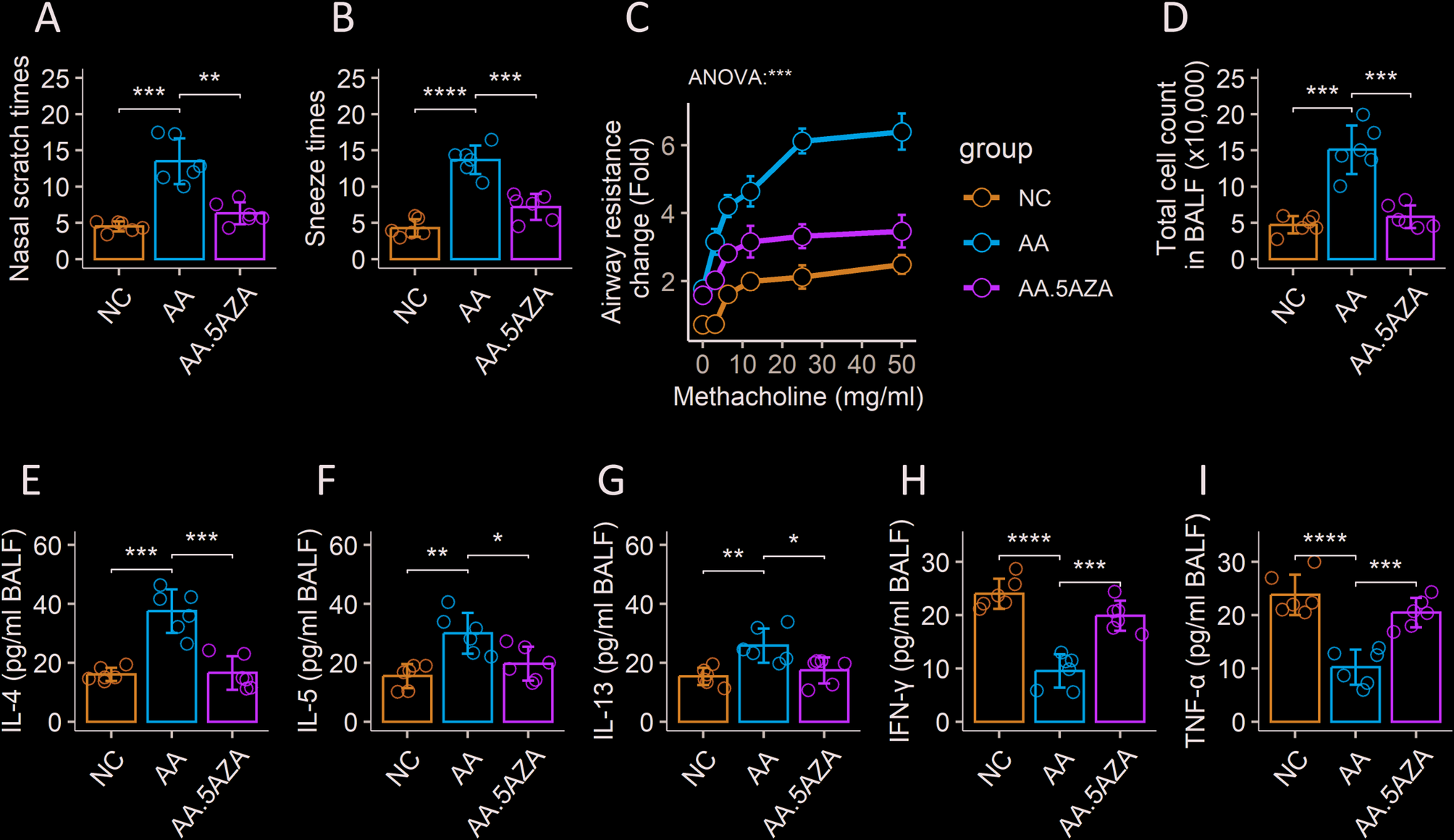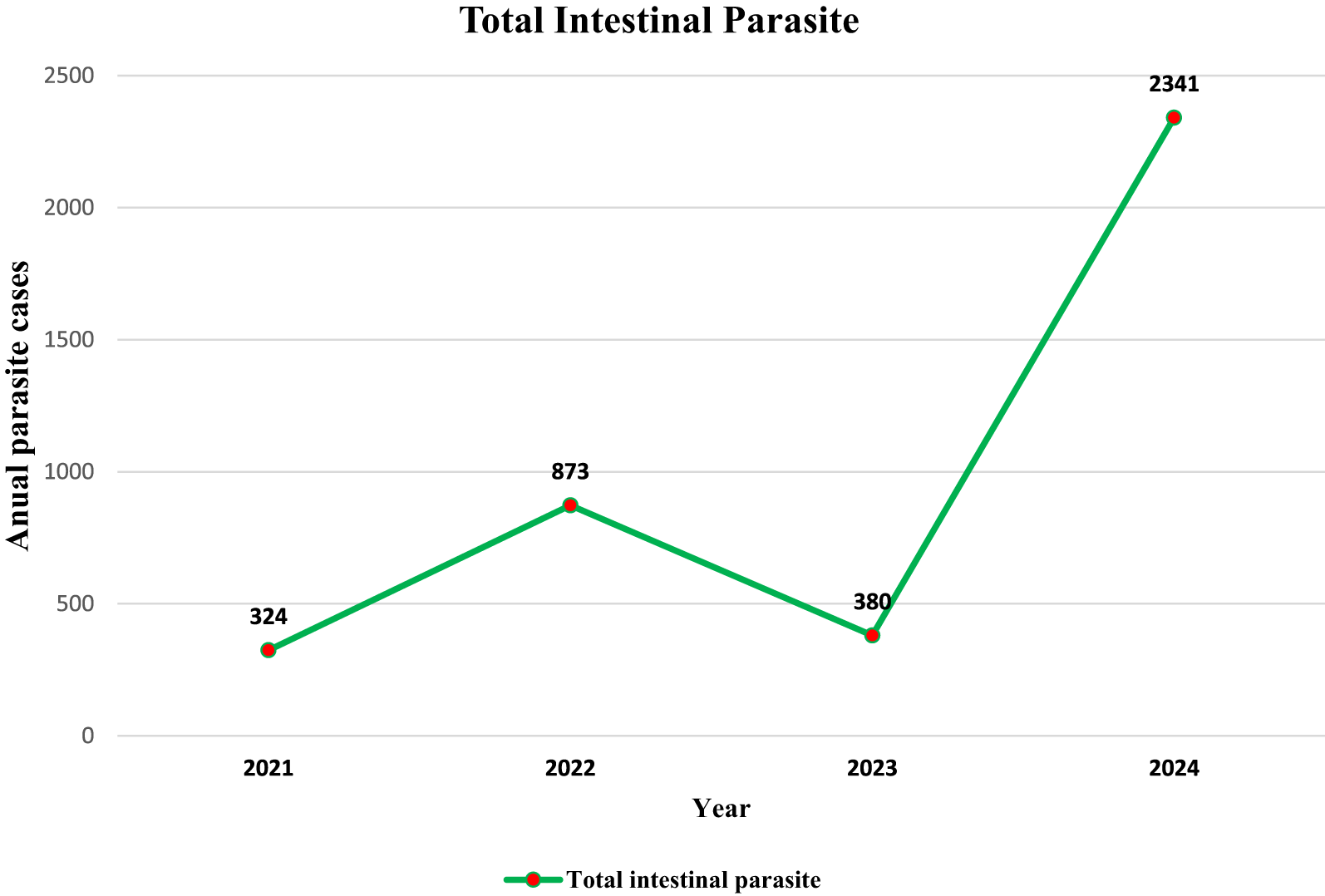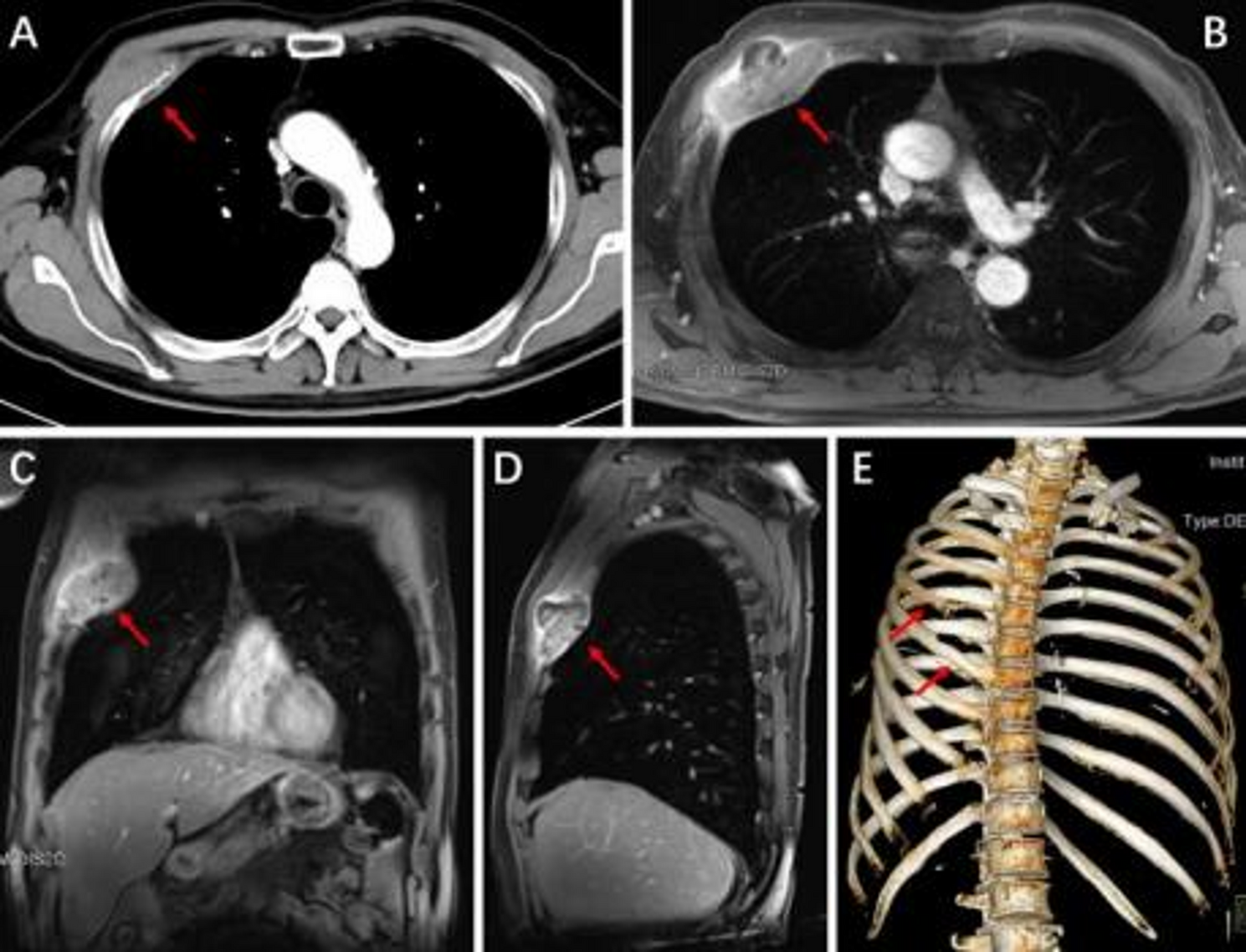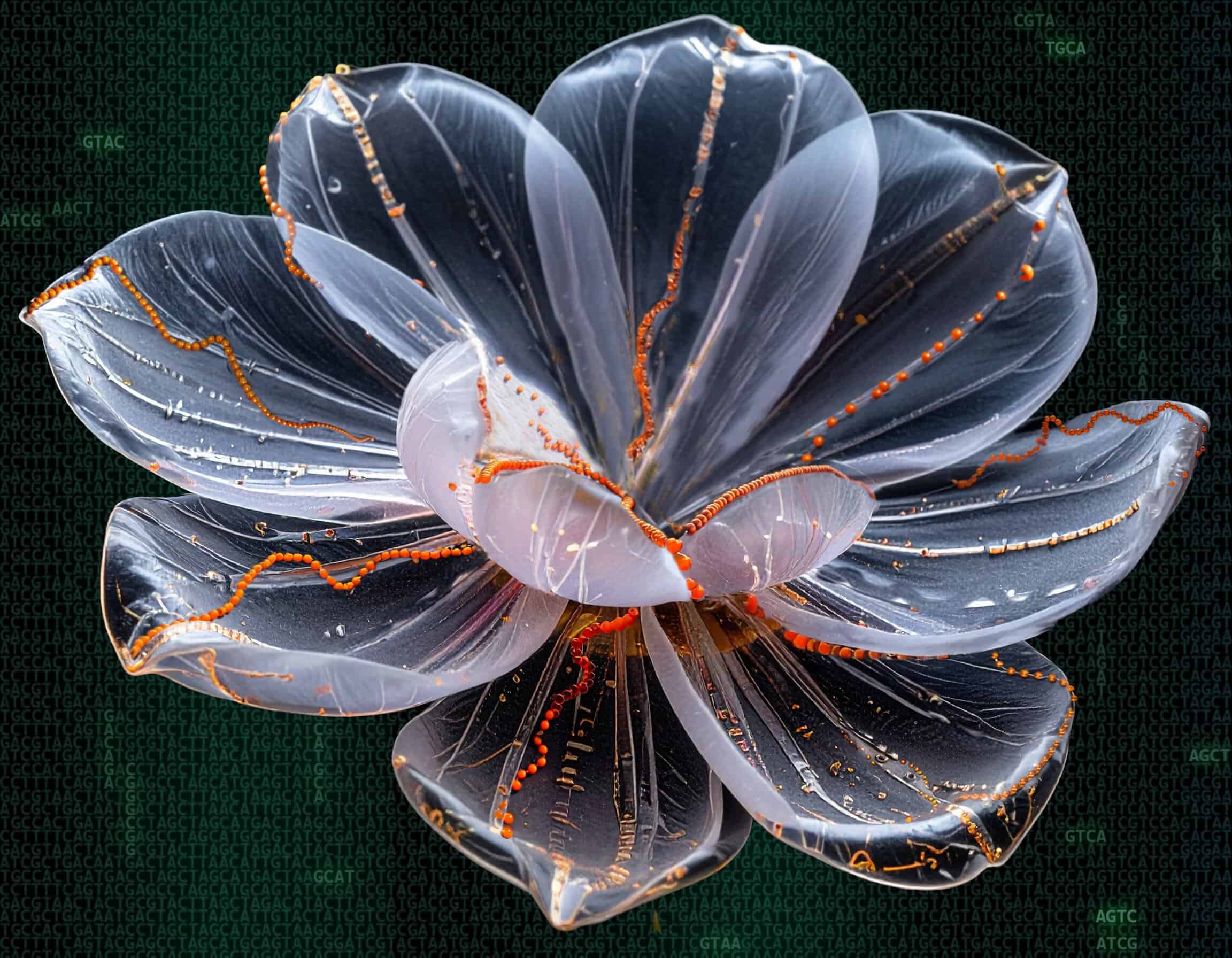Building a bold new contemporary home directly on the British coastline is a tall order. Aside from the logistics of designing a house that functions successfully in such an unforgiving setting, planning permission is likely to make it a…
Blog
-

HP withdraws OneAgent update after problem with Microsoft Entra ID
HP withdrew an update to its OneAgent software for Windows 11 after it was found to cause serious authentication problems on some AI PCs. The update removed crucial Microsoft certificates used by organizations to log in via…
Continue Reading
-

Epigenetic reprogramming of dendritic cells by DNMT1 inhibition attenuates Th2 skewing in allergic airway inflammation | Cell Communication and Signaling
Animals and ethics
Female C57BL/6 mice (6–8 weeks old) were purchased from the Beijing Experimental Animal Center. Conditional Dnmt1 knockout mice (Dnmt1fl/fl Itgax-Cre) and their littermate controls (Dnmt1fl/fl) were generated by crossing Dnmt1fl/fl mice (Jackson Laboratory, Stock No. 021429) with Itgax-Cre mice (Jackson Laboratory, Stock No. 008068). All experimental protocols were approved by the Animal Care and Use Committee (IACUC) of Shanxi Medical University (Approval Number: A20230086) and complied with the guidelines of the National Institutes of Health (NIH) for the care and use of laboratory animals.
Induction of airway allergy (AA)
Mice were sensitized to induce airway allergy using dust mite extract (DME). On days 0 and 7, mice received subcutaneous injections of 50 µg DME (Dermatophagoides pteronyssinus; Greer Laboratories, Cat. No. XPB82D3A2.5) emulsified in 2 mg Imject® Alum (Thermo Fisher Scientific). From days 14 to 18, mice were challenged intranasally (i.n.) with 25 µg DME in 40 µL phosphate-buffered saline (PBS); control mice received PBS alone. Following DME challenge, clinical symptoms of AA (sneezing, nasal rubbing, and dyspnea) were scored to assess disease severity.
Drug administration
Mice were treated with 5-azacytidine (5AZA; Sigma-Aldrich, Cat. No. A2385) or PBS (vehicle control) to inhibit DNA methyltransferases. Daily intraperitoneal (i.p.) injections of 5AZA (0.5 mg/kg body weight) or PBS were administered from day 0 to day 18 of the experimental timeline.
Cell isolation and culture
Bone marrow-derived DCs (BMDCs)
Bone marrow cells were flushed from the femurs of mice and cultured in RPMI-1640 medium (Gibco) supplemented with 10% fetal bovine serum (FBS), 20 ng/mL granulocyte-macrophage colony-stimulating factor (GM-CSF; PeproTech), and antibiotics (100 U/mL penicillin and 100 µg/mL streptomycin) for 7 days to generate BMDCs.
BMDC stimulation
Mature BMDCs were treated with DME (10–50 µg/mL) in the presence or absence of lipopolysaccharide (LPS; 1 µg/mL, E. coli O111:B4; Sigma-Aldrich) for 24 h to assess cytokine production and epigenetic changes.
Molecular biology techniques
Reverse transcription quantitative PCR (RT-qPCR)
Total RNA was extracted from cells using TRIzol reagent (Invitrogen), and complementary DNA (cDNA) was synthesized with SuperScript IV Reverse Transcriptase (Thermo Fisher Scientific). Quantitative PCR was performed using SYBR Green Master Mix (Bio-Rad) on a CFX96 Real-Time PCR System (Bio-Rad) to quantify the expression of Il12b, Il12a, Tim4, Il4, and Gapdh (housekeeping gene). Primer sequences are listed in Table 1.
Table 1 Primer sequences for RT-qPCR Enzyme-linked immunosorbent assay (ELISA)
Cytokine levels (IL-4, IL-5, IL-13, IFN-γ, TNF-α) in bronchoalveolar lavage fluid (BALF) were measured using DuoSet ELISA kits (R&D Systems) according to the manufacturer’s instructions. Absorbance was read at 450 nm, and cytokine concentrations were calculated using standard curves.
Methylation-specific quantitative PCR (MS-qPCR)
Genomic DNA was extracted from DCs and bisulfite-converted using the EZ DNA Methylation-Lightning Kit (Zymo Research) to distinguish methylated from unmethylated cytosines. The methylation status of the Il12b promoter was analyzed by MS-qPCR using primers specific for methylated (MSP) or unmethylated (USP) sequences: MSP-F: 5’-TTGGGATTTTTCGCGATTC-3’, MSP-R: 5’-GAACCCGACGAACTCCG-3’; USP-F: 5’-TTGGGATTTTTTGTGATTTG-3’, USP-R: 5’-CAACCCCACAAACTCCA-3’. Reactions were performed with SYBR Green Master Mix (Bio-Rad) on a CFX96 Real-Time PCR System.
Flow cytometry
Lung immune profiling
Lung tissues were processed into single-cell suspensions, which were stained with fluorescently conjugated antibodies: CD11c (APC), MHC-II (PE-Cy7), Ly6G (FITC), Siglec-F (BV421), CD3 (PerCP), CD4 (AF700), and CD8 (PE) (all from BD Biosciences). Stained cells were acquired on a BD LSRFortessa™ flow cytometer, and data were analyzed using FlowJo software (v10).
Intracellular cytokine staining
DCs were stimulated with 50 ng/mL phorbol 12-myristate 13-acetate (PMA) and 1 µg/mL ionomycin for 4 h. Cells were then fixed and permeabilized using the Cytofix/Cytoperm Kit (BD Biosciences) and stained with antibodies against IL-12b (PE) or IL-12a (AF488) (BD Biosciences) for intracellular cytokine detection.
Histology
Lungs were inflated with 4% paraformaldehyde, fixed overnight, and embedded in paraffin. Paraffin blocks were sectioned into 5-µm slices, which were stained with hematoxylin and eosin (H&E) to assess tissue inflammation. Stained sections were imaged using a Leica DMi8 microscope, and histological changes were evaluated by a blinded pathologist.
Airway hyperresponsiveness (AHR)
AHR was measured using a flexiVent system (SCIREQ) to assess airway resistance. Mice were anesthetized, intubated, and exposed to aerosolized methacholine (0–50 mg/mL) for 3 min. Airway resistance was recorded continuously during and after methacholine exposure, and results were normalized to baseline values.
Co-culture experiments
DME-primed BMDCs were co-cultured with naïve CD4+ T cells (isolated from mouse spleens using MACS columns; Miltenyi Biotec) at a 1:5 (DC: T cell) ratio in RPMI-1640 medium supplemented with 10% FBS and antibiotics. After 72 h of co-culture, Il4 mRNA expression in CD4+ T cells was quantified by RT-qPCR to assess Th2 polarization.
Ubiquitination assays (Cross-ELISA)
BMDCs were treated with 50 ng/mL recombinant IL-12b (rIL-12b; BioLegend) in the presence or absence of 10 µM MG132 (a proteasome inhibitor; Sigma-Aldrich) for 6 h. Cells were lysed in RIPA buffer, and ubiquitinated TIM4 was detected using a cross-ELISA method. Briefly, plates were coated with an anti-TIM4 antibody (Ab1), and bound ubiquitinated TIM4 was detected with an anti-ubiquitin antibody (Ab2); protocols were adapted from Luo et al. [10] and otherwise consistent with standard ELISA procedures.
Chromatin immunoprecipitation (ChIP)
DCs were crosslinked with 1% formaldehyde for 10 min at room temperature, and crosslinking was quenched with 125 mM glycine. Cells were lysed, and chromatin was sheared by sonication to generate 200–500 bp fragments. Immunoprecipitation was performed overnight at 4 °C using antibodies against DNMT1 (Abcam), H3K4me3 (Cell Signaling Technology), or RNA polymerase II (RNA Pol II; Santa Cruz Biotechnology); normal IgG was used as a negative control. Immunoprecipitated DNA was purified and quantified by qPCR using primers targeting the Il12b promoter to assess enrichment of the target proteins.
Statistical analysis
All data are presented as the mean ± standard deviation (SD). Statistical comparisons between two groups were performed using Student’s t-test. For multiple groups, one-way analysis of variance (ANOVA) with Tukey’s post hoc test was used. Analyses were conducted using R (v4.5.1) software. Significance was defined as p < 0.05 (p < 0.05 = *, p < 0.01 = **, p < 0.001 = ***, p < 0.0001 = ****).
Continue Reading
-

Prevalence and species distribution of intestinal parasites: a four-year retrospective study at Burao general hospital, Somaliland | BMC Research Notes
The results of this four-year retrospective study at Burao General Hospital in Somaliland provide valuable insights into the prevalence and distribution of intestinal parasites in the region. These findings reveal a significant burden of…
Continue Reading
-

Rat Crashes Aussie Team Dinner at Women’s World Cup
Australia may be cruising through this year’s Women’s ODI World Cup, but it seems their toughest opponent so far wasn’t England or India, it was a rat.
Cricketers Kim Garth and Ashleigh Gardner recently shared a bizarre…
Continue Reading
-

Trump says all Canada trade talks ‘terminated’ over ad criticising tariffs | Trump tariffs
Donald Trump has announced an immediate end to “all trade negotiations” with Canada over a television advertisement opposing US tariffs that quoted the former US president Ronald Reagan.
The ad, which was paid for by the government of the…
Continue Reading
-

New consultation over major solar scheme between York and Selby
A fresh consultation has been launched into proposals for what, if approved, would be one of the UK’s largest solar energy schemes.
Energy developer Island Green Power wants to build the 500MW Light Valley Solar project, consisting of seven solar farms on a 2,520 acre (1,020 hectare) site, between York and Selby.
Annette Lardeur, senior project development manager, said this third consultation concerned changes to the plans which were “minor in nature” and would “improve safety and access”.
However, Louise Billingham, from campaign group Rooftops Not Countryside, said its members remained opposed to the plans due to the site’s “vast scale and inappropriate placement”.
Further land on the development would be used for underground cabling to connect the sites to the national grid at Monk Fryston substation, meanwhile a 500MW battery energy storage system (BESS) was also proposed.
Due to the size of the proposed development, which would be located between the villages of Escrick, Monk Fryston, Hambleton, Chapel Haddlesey and South Milford, the Light Valley Solar scheme has been declared a Nationally Significant Infrastructure Project.
That means planning permission will be decided by the national Planning Inspectorate, rather than North Yorkshire Council.
According to the Local Democracy Reporting Service, Ms Lardeur said she wanted to “encourage people to share their views” as part of the new consultation.
“The changes we are consulting on are minor in nature and have been introduced to improve safety and access if the scheme is consented,” she explained.
“As well as this, they aim to reduce the amount of construction traffic passing through villages. I encourage people to share their views.”
Ms Billingham said the campaign group, which had collected nearly 3,000 signatures against the plans, said if the solar farm went ahead, “our countryside will no longer be countryside, it will be a vast industrial estate”.
“This impromptu round of consultation is for Light Valley Solar to make changes that will remove established hedgerows, trees and nature and also build lay-bys and roads,” she said.
“They plan to build one million 4m high solar panels, numerous substations and BESS sites, as well as cable corridors, high-security fencing and CCTV across 13 miles of countryside between Monk Fryston and Escrick.”
The group had so far raised at least £2,000 through crowdfunding for the campaign against the plans, which would pay for banners and leaflets to raise awareness of the proposed solar farm, Ms Billingham added.
If approved, Light Valley would be bigger than what is currently the largest operational solar scheme, at Cleave Hill in Kent.
The scheme would provide enough power for 115,000 homes a year, according to Island Green Power.
Continue Reading
-

A forgotten chapter in the history of the Nuremberg trials
“They weren’t buddies,” author El-Hai tells the BBC. “But they formed a connection, and Kelley recognised that they shared certain personality traits.” As well as acknowledging Göring’s charm and intelligence, the doctor noted his drive, his…
Continue Reading
-

Solitary squamous cell carcinoma of the right chest wall following VATS lobectomy for NSCLC: A rare case report | Journal of Cardiothoracic Surgery
This case presents a rare instance of a solitary right chest wall squamous cell carcinoma occurring 21 months after the resection of a left non-small cell lung cancer (NSCLC) of the same histologic type. A key consideration in this case is…
Continue Reading
-

Scientists Built Tiny DNA Flowers That Can Move on Their Own and Deliver Targeted Treatments
Visualization of the microscopic “DNA flowers” made by Ronit Freeman in the Freeman Lab at UNC. Credit: Justin Hill, Philip Rosenberg, and Ronit Freeman They look like small, flowers, curling and unfolding with changes around…
Continue Reading
